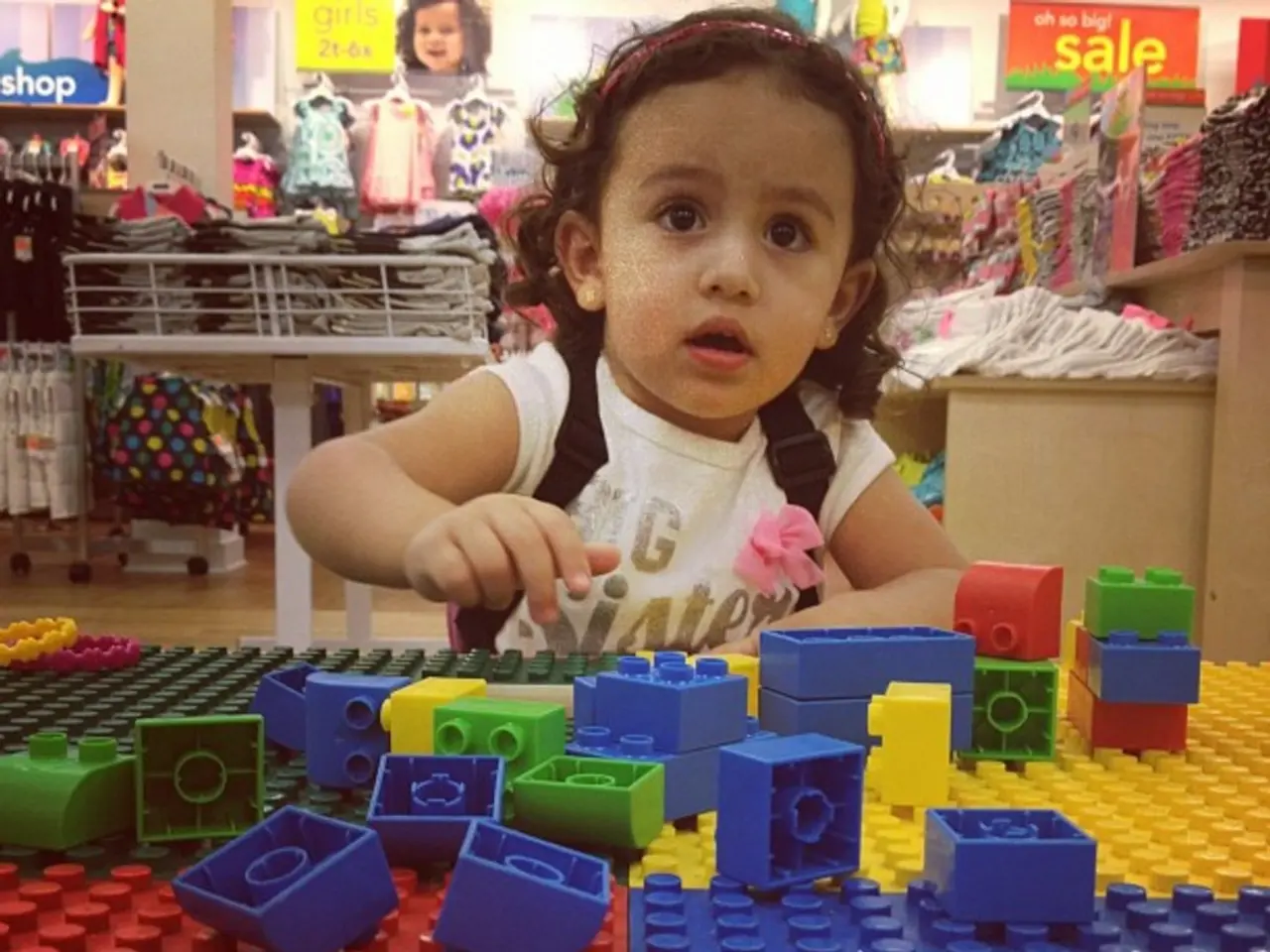Activities and Strategies for Overcoming Separation Anxiety
In many children's lives, separation anxiety can be a challenging hurdle to overcome, especially during critical developmental stages such as toddlerhood, preschool, kindergarten, and school age. This article aims to provide parents, caregivers, and educators with a variety of strategies to support children in managing their emotions during these situations.
Common signs of separation anxiety include crying when a parent leaves the room or home, tantrums, avoidance behaviors, clinging to parents, and refusing to attend certain situations. However, it is essential to remember that every child is unique, and their responses to separation may vary.
One effective technique to help children cope with short periods of separation, even at home, is the magic number technique. This involves practicing away time for short periods, using a timer or watch to count up to a "magic number" and gradually increasing it.
Another strategy is using a clock to help children visualize when they will reunite with their parent/guardian. The clock can be made with paper and include "grace" time for factors like traffic.
Starting each day with a feelings check-in can be a simple trick for helping kids with separation anxiety at kindergarten, preschool, or other drop-off situations. This allows children to express their emotions and prepare for the day ahead.
Books can play a significant role in helping children understand and cope with separation anxiety. Stories like "Owl Babies," which tells the tale of owl siblings worried when their mother leaves the nest, can provide comfort and help children process their feelings. Other books, such as "Benny Learns to Say Goodbye!," "The Invisible String," "When I Miss You," "Daniel Feels One Nervous Stripe," "What to Do When You Don't Want to Be Apart," "I Don't Want to Go to School," "See You Later Croc-a-Gator," and "The Kissing Hand," offer children a chance to relate to characters experiencing similar feelings and learn strategies to cope.
Practice routines, like visual schedules, can also help with some individuals. These routines provide a sense of security and predictability, helping children know what to expect during the day.
In more severe cases, separation anxiety may require work with a child psychologist. However, occupational therapy can support families and the team in using meaningful and motivating strategies to help children with separation anxiety participate in daily functional tasks. This may include using a timer, establishing a secure relationship with the teacher or therapy provider, using a visual schedule, allowing choices in therapy sessions, making therapy fun and engaging, creating a social story on being away from loved ones for short periods, educating parents and educators on the limbic system and the possibility of the child being in a fight or flight state, educating on interoception and supporting the child with tools to slow a fast heart rate, etc.
Good sleep hygiene is important for both the child and the parent or caregiver. Ensuring a consistent sleep routine can help reduce the impact of separation anxiety on the child's sleep patterns.
Focusing on kindergarten friendships can also help reduce the impact of separation anxiety. This can include enlisting a friend to help walk the child to the classroom, having a buddy to get started during the day, and creating a social support system with a small group of friends.
It is essential to remember that every child is unique, and what works for one may not work for another. By understanding the signs of separation anxiety and employing a variety of strategies, parents, caregivers, and educators can help children manage their emotions and navigate these challenging situations.
If separation anxiety feels like a disaster at every drop-off, it may be helpful to consult with a pediatrician to rule out other concerns such as illness or to discuss options for further support. Severe separation anxieties can negatively impact a child's social and emotional functioning, so it is crucial to seek help when needed.
Involving familiar family members in the routine, keeping goodbyes short and positive, talking about emotions, practicing separation in small ways, preparing the child for what to expect, using books and pretend play to help the child process and understand their feelings, limiting big changes at the same time, staying calm and supportive, communicating with the teacher, and creating a consistent goodbye routine are all strategies that can help children with separation anxiety.
A DIY separation anxiety charm can be created for kids to wear during separation situations to remind them that parents and caregivers still love and miss them even when not in view. Making a bird wing sign can be a calming self-regulation activity for preschool or kindergarten students experiencing separation anxiety. The child hooks their thumbs together and spreads their fingers out to create the wings of an owl, then wraps both hands around their thumbs to create an owl baby and squeezes their hands tight to give themselves a hug.
In conclusion, separation anxiety is a common issue faced by many children, but with the right strategies and support, it can be managed effectively. By understanding the signs, employing various coping mechanisms, and seeking help when needed, parents, caregivers, and educators can help children overcome separation anxiety and thrive in their daily lives.
Read also:
- Peptide YY (PYY): Exploring its Role in Appetite Suppression, Intestinal Health, and Cognitive Links
- Toddler Health: Rotavirus Signs, Origins, and Potential Complications
- Digestive issues and heart discomfort: Root causes and associated health conditions
- House Infernos: Deadly Hazards Surpassing the Flames




